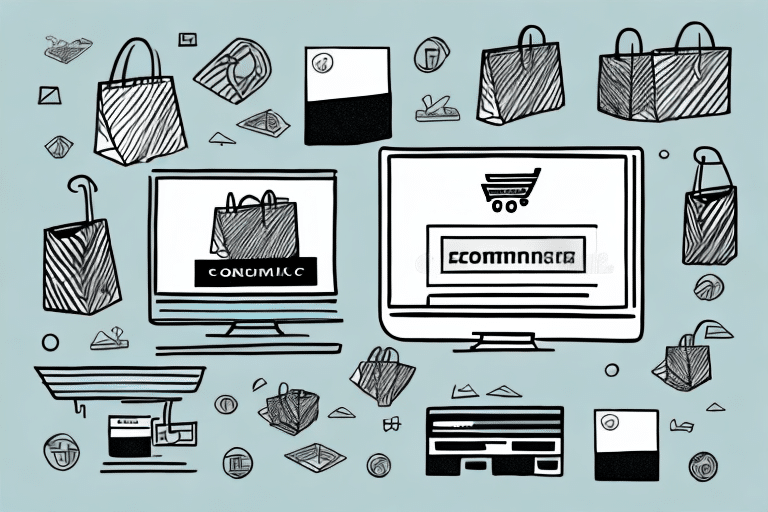Which Ecommerce Business Model Is Right for You?
As online shopping continues to surge, establishing a robust ecommerce presence is crucial for businesses aiming to thrive in the digital marketplace. With a myriad of business models available, selecting the right one can be daunting. This article delves into various ecommerce business models, examining their advantages and drawbacks, and provides guidance on choosing the best fit for your business.
Introduction to Ecommerce Business Models
An ecommerce business model outlines how you sell products or services online, encompassing aspects from sourcing and fulfillment to revenue generation. Understanding the different models is essential for aligning your strategy with your business goals.
Common ecommerce business models include:
- Direct-to-Consumer (D2C)
- Subscription-Based
- Dropshipping
- Marketplace
- Affiliate Marketing
- Hybrid Models
- White Labeling
- B2B Ecommerce
Choosing the appropriate model can significantly influence your brand control, customer reach, and overall success. For instance, a D2C model allows for greater brand control, while a marketplace model can expand your customer base through an established platform.
Understanding the Pros and Cons of Different Ecommerce Business Models
Evaluating the strengths and weaknesses of each ecommerce model is pivotal in making an informed decision. Below is an in-depth analysis of some of the most prevalent models:
Direct-to-Consumer (D2C)
The D2C model involves selling products directly to consumers without intermediaries. This approach fosters strong customer relationships and offers complete control over the brand and customer experience.
- Pros: Enhanced brand loyalty, higher profit margins, direct customer feedback.
- Cons: Requires substantial investment in marketing and infrastructure, challenging for new brands without an established presence.
According to a Forbes report, the D2C sector has seen a growth rate of over 20% annually, highlighting its increasing popularity.
Subscription-Based
In a subscription-based model, customers pay regularly to receive products or access services. This model is prevalent in industries like cosmetics, meal kits, and digital services.
- Pros: Predictable revenue streams, higher customer lifetime value, improved inventory management.
- Cons: Requires continuous value delivery to prevent churn, potential for market saturation.
Statista reports that the global subscription e-commerce market is projected to reach $478.2 billion by 2025, emphasizing the potential of this model.
Dropshipping
Dropshipping allows businesses to sell products without holding inventory, partnering with suppliers who handle storage and shipping.
- Pros: Low startup costs, minimal inventory risk, wide product selection.
- Cons: Lower profit margins, less control over product quality and shipping times, potential supplier issues.
While dropshipping offers accessibility, it's important to choose reliable suppliers to maintain quality and customer satisfaction.
Marketplace
A marketplace model creates a platform where multiple sellers can offer their products, benefiting from a larger customer base.
- Pros: Diverse product offerings, scalability, revenue through commissions or fees.
- Cons: High competition among sellers, complex platform management, dependency on platform reputation.
Amazon remains the dominant player in this space, commanding over 40% of the US ecommerce market as of 2023 (eMarketer).
Affiliate Marketing
Affiliate marketing involves promoting other companies' products and earning a commission on sales generated through your referrals.
- Pros: No need to handle products or customer service, scalable income potential.
- Cons: Dependence on affiliate programs, income variability, potential brand dilution.
This model is particularly effective for content creators, bloggers, and influencers with engaged audiences.
Hybrid Model
A hybrid model combines elements of multiple ecommerce models to tailor a unique solution for specific business needs.
- Pros: Flexibility, ability to diversify revenue streams, tailored customer experiences.
- Cons: Increased complexity, higher operational costs, requires strategic planning.
Brands like Nike utilize a hybrid approach by maintaining their D2C channels while also selling through major retailers.
White Labeling
White labeling involves rebranding products manufactured by another company, allowing businesses to market them as their own.
- Pros: Faster time-to-market, lower production costs, focus on branding and marketing.
- Cons: Limited product differentiation, dependency on manufacturer quality, potential market saturation.
This model is common in industries such as cosmetics and electronics, where branding plays a critical role.
B2B Ecommerce
B2B ecommerce focuses on selling products or services to other businesses rather than individual consumers.
- Pros: Larger order sizes, longer-term contracts, specialized products.
- Cons: Longer sales cycles, need for customized solutions, higher customer service demands.
According to Statista, B2B ecommerce is expected to grow to $25.6 trillion by 2028, underscoring its significance.
Deciding on the Best Ecommerce Business Model for Your Needs
Selecting the optimal ecommerce model requires careful consideration of various factors aligned with your business objectives. Here are key questions to guide your decision:
- Do you have an established brand and customer base, or are you launching a new venture?
- What types of products or services are you offering, and how will you manage order fulfillment?
- What is your budget for marketing and customer support?
- What are your revenue targets, and what profit margins do you aim to achieve?
Additionally, consider the level of control you desire over your customer experience and the scalability of the model to accommodate future growth. For example, while dropshipping offers low initial costs, a D2C model may provide better long-term brand equity and customer loyalty.
Referencing insights from Harvard Business Review, aligning your business model with your strategic goals is essential for sustainable success.
Strategies for Scaling Your Ecommerce Business with Different Business Models
Once you've chosen an ecommerce business model, implementing strategies to scale your operations is vital. Here are effective strategies tailored to various models:
Expanding Product Selection
Broadening your product range can attract a wider audience and increase sales. For D2C brands, this might involve developing new product lines, while marketplace platforms can onboard more sellers to enhance diversity.
Optimizing for Search Engines (SEO)
Improving your website’s SEO ensures higher visibility in search engine results, driving organic traffic. This involves keyword optimization, high-quality content creation, and technical SEO enhancements.
Data from Search Engine Journal indicates that 75% of users never scroll past the first page of search results, highlighting the importance of effective SEO.
Investing in Targeted Advertising
Leveraging targeted advertising on platforms like Google Ads, Facebook, and Instagram can effectively reach your desired audience. Tailored ads based on user behavior and preferences can enhance conversion rates.
Focusing on Customer Retention
Retaining existing customers through loyalty programs, personalized recommendations, and exceptional customer service can boost lifetime value and reduce acquisition costs.
A study by Bain & Company reveals that increasing customer retention rates by 5% can increase profits by 25% to 95%.
Partnering with Other Businesses
Collaborations and partnerships can expand your reach and enhance your offerings. This could include affiliate marketing programs, joint ventures with complementary brands, or leveraging third-party platforms.
Tips for Navigating Legal and Regulatory Issues with Various Ecommerce Business Models
Compliance with legal and regulatory standards is paramount in ecommerce. Different business models may present unique legal challenges:
Data Privacy and Security
Ensuring compliance with data protection laws such as the GDPR in Europe and CCPA in California is essential when handling customer information.
Regular audits and robust cybersecurity measures can safeguard against data breaches and maintain customer trust.
Tax Compliance
Ecommerce businesses must adhere to tax regulations, which can vary by region and product type. Utilizing tax automation software can simplify the process of managing sales tax, VAT, and other applicable taxes.
Intellectual Property Rights
Protecting your brand through trademarks and ensuring you do not infringe on others’ intellectual property is critical. This includes careful selection of business names, logos, and avoiding unauthorized use of copyrighted materials.
Consulting with legal experts can help navigate the complexities of intellectual property law and ensure your business remains compliant.
International Regulations
Expanding globally introduces additional regulatory considerations, including import/export laws, local consumer protection laws, and international trade agreements.
Researching and understanding the regulatory landscape of target markets is essential for seamless international operations.
Case Studies: Real-Life Examples of Successful Businesses Using Different Ecommerce Models
Examining successful businesses can provide valuable insights into the effective implementation of various ecommerce models:
- Warby Parker (D2C): By selling eyewear directly to consumers, Warby Parker offers stylish glasses at affordable prices, leveraging customer feedback to refine their offerings.
- Netflix (Subscription-Based): As a leader in the subscription model, Netflix continuously enhances its service with original content and a user-friendly interface.
- Wish (Dropshipping Marketplace): Wish connects buyers with a vast array of low-cost products through a dropshipping model, focusing on direct sourcing to maintain affordability.
- Shopify (Hybrid Model): Shopify provides a versatile platform for businesses to create online stores, offering tools for both D2C sales and integration with other marketplaces.
Shopify stands out with over 1.75 million businesses using its platform as of 2023 (Shopify Statistics). Their hybrid approach empowers entrepreneurs to manage their online presence while integrating with various sales channels.
Future Trends in Ecommerce Business Models: What to Watch For
The ecommerce landscape is continually evolving. Keeping abreast of emerging trends can position your business for future success:
- Social Commerce: Platforms like Instagram and Facebook are integrating direct shopping features, enabling seamless purchasing experiences within social media environments.
- AI and Automation: Artificial intelligence is enhancing customer personalization, chatbots, and inventory management, streamlining operations and improving user experiences.
- Eco-Friendly Practices: Growing consumer demand for sustainable products is driving businesses to adopt eco-friendly sourcing, packaging, and delivery methods.
- Augmented Reality (AR): AR technologies allow customers to visualize products in real-world settings, enhancing the online shopping experience.
- Voice Commerce: The rise of voice-activated assistants is creating new opportunities for voice-based shopping and customer interactions.
Adapting to these trends, such as integrating AI-driven personalization or adopting sustainable practices, can enhance your competitive edge and meet evolving consumer expectations.
Additionally, the Forbes Tech Council highlights the increasing importance of mobile commerce and the integration of blockchain for secure transactions as key areas to monitor.
Conclusion
The right ecommerce business model is integral to achieving success in the competitive online marketplace. By thoroughly evaluating your business needs, understanding the pros and cons of each model, and staying informed about industry trends, you can select a strategy that aligns with your goals and paves the way for growth.
Continuous analysis and adaptability are essential, as the ecommerce landscape is dynamic and consumer behaviors constantly evolve. Being open to refining your business model or pivoting when necessary can ensure long-term viability and success.




















